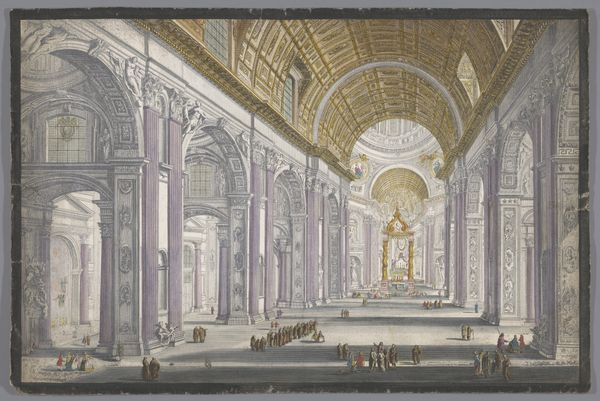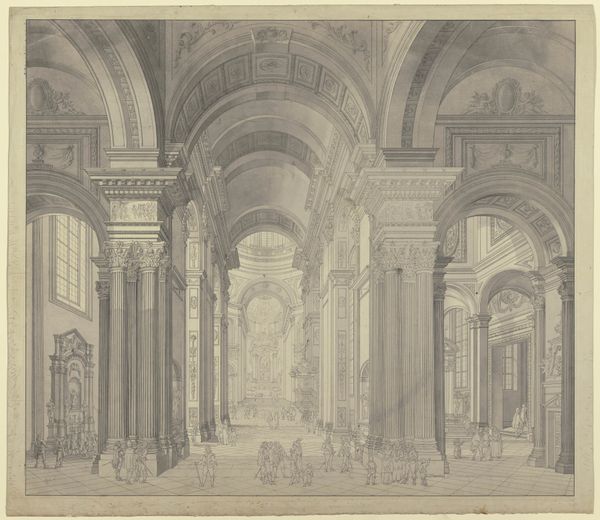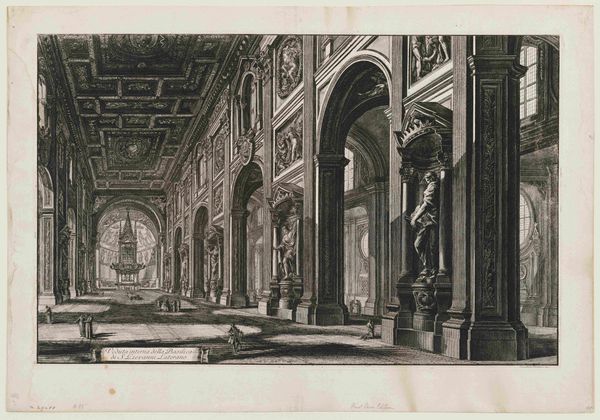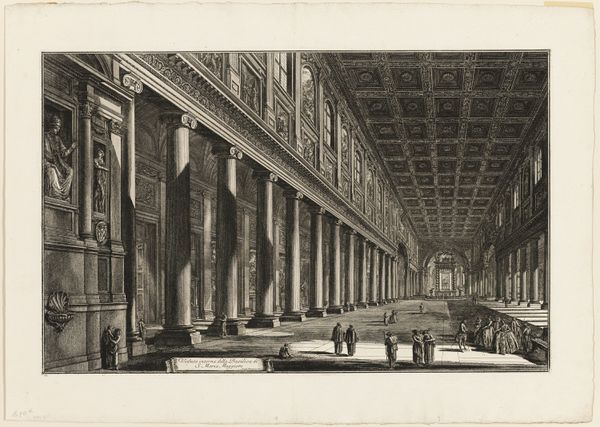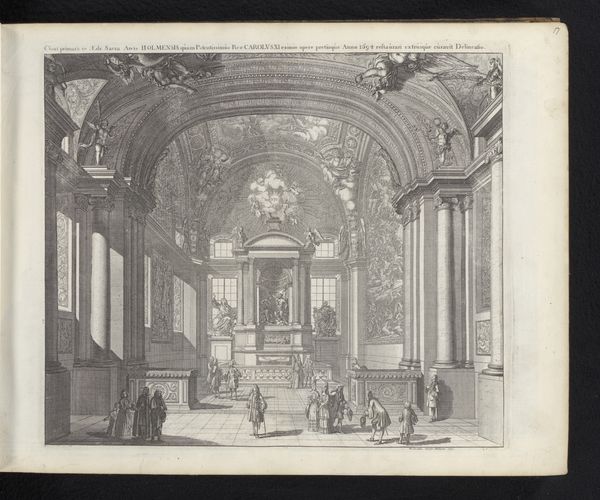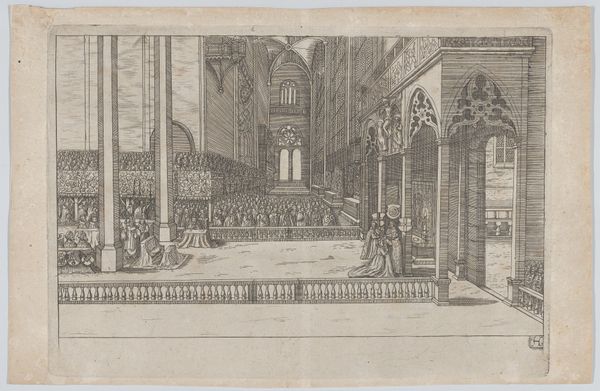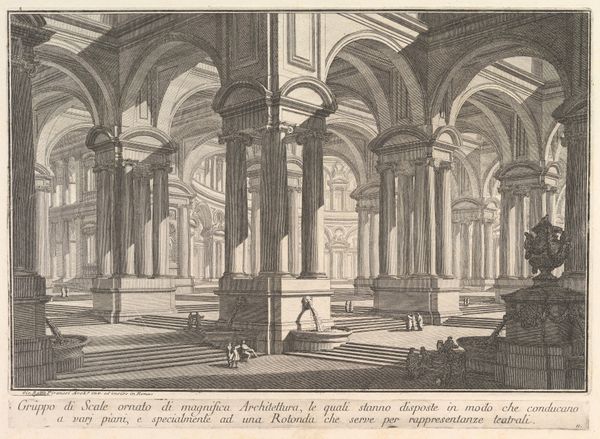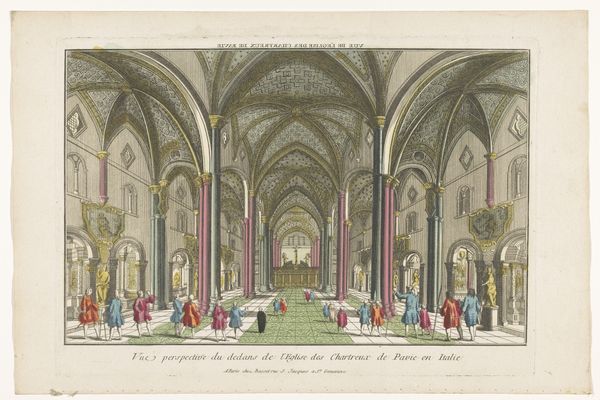
print, paper, engraving
#
baroque
# print
#
perspective
#
paper
#
cityscape
#
history-painting
#
engraving
Dimensions: height 248 mm, width 402 mm
Copyright: Rijks Museum: Open Domain
Editor: Here we have Robert Sayer's "Interior View of Saint Paul's Cathedral in London" from 1753, created as a print on paper using engraving. The composition seems meticulously organized and overwhelmingly monumental. How do you interpret this work? Curator: Beyond its aesthetic grandeur, I see a powerful representation of British authority at a pivotal point in history. Consider the Baroque style, favored by institutions aiming to project dominance, deployed here. How does this depiction of sacred space legitimize social hierarchies and colonial power in its time? Editor: So the vastness of the cathedral isn't just about religious devotion? Curator: Precisely. It’s equally a demonstration of power and control. Notice how the figures within are dwarfed by the architecture, suggesting individual insignificance compared to the institution. Do you observe a parallel between this and the way empire functioned, diminishing the agency of colonized populations? Editor: I didn’t consider that. The figures seem more like decorations rather than active participants. Curator: Indeed. Now, reflect on the intended audience for this print. Who would be consuming and circulating these images, and what impact would it have on solidifying public perception of power dynamics during the 18th century? Editor: Possibly the wealthy, reinforcing their privileged position? Curator: Exactly. By understanding the social context in which this image was created and consumed, we can move beyond a purely aesthetic appreciation and begin to unpack the ideological work it performs. Editor: This makes me look at it in an entirely new light. It is not just about a beautiful building. Curator: Precisely, art like this invites us to examine the relationships between architecture, power, and the construction of identity in society.
Comments
No comments
Be the first to comment and join the conversation on the ultimate creative platform.


